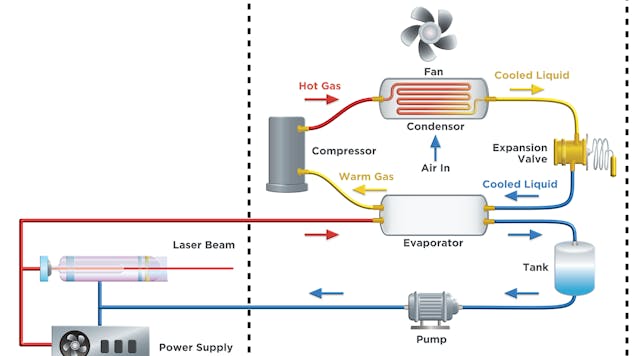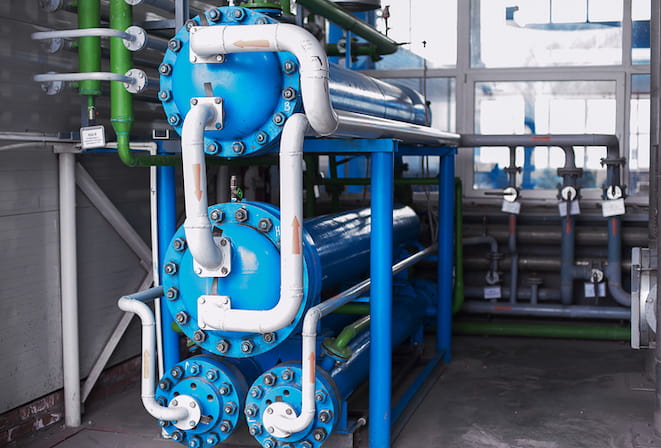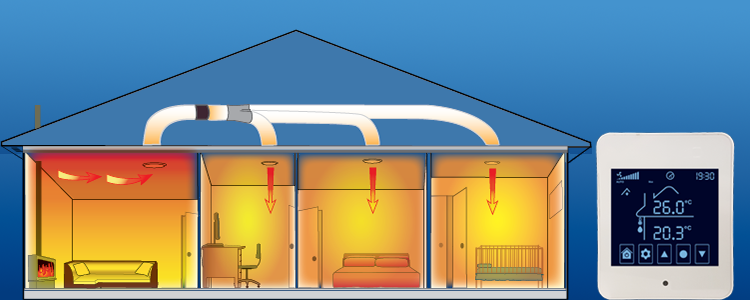Why DVS Heat Transfer Systems Use Nanotechnology to Outperform Traditional Cooling Systems
Wiki Article
A Comprehensive Guide to Selecting the Right Heat Transfer Equipments for Your Requirements
Selecting the proper Heat transfer system is important for functional efficiency. Different systems cater to various requirements, influenced by aspects such as temperature variety and liquid type. Comprehending the concepts behind Heat transfer, such as transmission, convection, and radiation, is crucial. In addition, assessing energy resources and upkeep techniques can affect long-lasting efficiency. A closer examination of these considerations reveals just how to tailor a system to particular needs. What should one prioritize in this facility decision-making procedure?Comprehending Heat Transfer: Trick Ideas and Concepts
Heat transfer may seem like a simple idea, it includes a range of principles that are basic for reliable system style - DVS Heat Transfer Systems. Recognizing these principles is vital for engineers and developers who aim to enhance thermal efficiency in various applications. Transmission, for instance, involves the transfer of Heat with strong materials, while convection refers to the motion of Heat within fluids. Radiation, an additional key concept, defines just how Heat can be transferred through electromagnetic waves. Each of these mechanisms plays a crucial role in figuring out exactly how energy moves within a system. By completely realizing these concepts, professionals can make informed choices, ensuring that Heat transfer systems run effectively and meet the particular demands of their applications
Kinds of Heat Transfer Solutions: A Review
Understanding the principles of Heat transfer prepares for checking out the various sorts of Heat transfer systems available. Heat transfer systems can be classified largely right into 3 types: conduction, convection, and radiation. Transmission includes Heat transfer via strong products, relying upon direct contact between bits. Convection, on the other hand, takes place in liquids (liquids and gases) where the activity of the fluid itself helps with Heat transfer. Radiation involves the transfer of Heat through electro-magnetic waves and does not need a tool, permitting it to happen in a vacuum cleaner. Each sort of system has distinctive attributes and applications, making it necessary for individuals and organizations to carefully evaluate their specific needs when picking one of the most ideal Heat transfer solution.Applications of Heat Transfer Solutions in Numerous Industries
Heat transfer systems play an important duty throughout various sectors, influencing performance and product quality. In industrial production procedures, they assist in precise temperature level control, while in food and beverage processing, they guarantee security and conservation. Additionally, cooling and heating and environment control systems depend greatly on effective Heat transfer to preserve comfortable environments.Industrial Manufacturing Processes

Countless industrial manufacturing procedures rely greatly on efficient Heat transfer systems to maximize efficiency and enhance item top quality. In industries such as metalworking, Heat exchangers play a crucial role in preserving suitable temperature levels during welding, casting, and creating. These systems assure consistent Heat circulation, which is vital for accomplishing preferred material properties. In the chemical manufacturing industry, Heat transfer systems assist in exact temperature level control during reactions, affecting yield and security. Additionally, in textile manufacturing, effective Heat administration is essential for dyeing and finishing processes, affecting color consistency and material high quality. By choosing suitable Heat transfer technologies, manufacturers can enhance energy efficiency and decrease operational prices, ultimately leading to an extra competitive and lasting manufacturing atmosphere.
Food and Drink Processing
Effective Heat transfer systems are similarly vital in the food and drink processing sector, where maintaining excellent temperatures is important for food safety and high quality. These systems play a necessary function in processes such as cooking, sterilization, and pasteurization, making sure that products are secure for consumption and preserve their nutritional worth. Heat exchangers, for instance, successfully move Heat between fluids, enhancing power use while minimizing temperature changes. Additionally, refrigeration systems are essential for maintaining perishable things and extending life span. The selection of Heat transfer modern technology directly influences functional efficiency and product honesty, making it critical for food and beverage makers to choose the ideal systems tailored to their certain handling requirements. This careful choice eventually adds to customer satisfaction and food safety and security.
Cooling And Heating and Environment Control
While lots of markets count on Heat transfer systems for effectiveness, HEATING AND COOLING (Heating, Ventilation, and A/c) plays an important role in keeping indoor environment control throughout different settings. These systems use Heat transfer principles to regulate air, temperature, and humidity quality, making sure comfort and safety in household, commercial, and industrial atmospheres. Properly designed cooling and heating systems enhance power performance, minimize operational expenses, and lessen ecological effect. In industrial structures, as an example, effective climate control adds to staff my blog member efficiency and consumer complete satisfaction. In commercial applications, cooling and heating systems help maintain suitable problems for tools operation and item conservation. Picking the ideal Heat transfer system is important for meeting certain environment control requirements and accomplishing general system performance.Evaluating Power Resources for Heat Transfer Systems
In evaluating energy sources for Heat transfer systems, a comparison of renewable resource options and nonrenewable fuel source considerations is vital. Sustainable resources, such as solar and wind, deal sustainable alternatives that can lower ecological effect. On the other hand, fossil fuels remain prevalent as a result of their well established facilities and power density, triggering a mindful evaluation of both choices.Renewable Energy Options

Fossil Gas Factors To Consider
Assessing fossil fuel considerations is vital for the effectiveness and sustainability of Heat transfer systems. Nonrenewable fuel sources, such as all-natural gas, oil, and coal, are standard energy resources that supply significant Heat output, making them preferred choices for commercial and domestic applications. Nevertheless, their environmental impact, consisting of greenhouse gas emissions and resource exhaustion, elevates worries. When selecting a warmth transfer system, it is important to analyze the accessibility, expense, and regulatory factors connected with these gas. Additionally, the effectiveness of nonrenewable fuel source systems need to be taken into consideration, as higher effectiveness can alleviate some ecological disadvantages. Inevitably, a well balanced method considering performance and sustainability can assist decision-makers towards the most proper Heat transfer solution for their particular demands.Aspects to Consider When Choosing a Heat Transfer System
Selecting a suitable Heat transfer system calls for careful consideration of numerous variables that can significantly influence effectiveness and efficiency. One vital element is the operating temperature range, which dictates the materials and layout appropriate for the application. In addition, the sort of liquid utilized in the system-- whether gas or liquid-- affects Heat transfer efficiency and compatibility. The system's dimension and ability must align with the particular requirements of the operation to prevent inadequacies. Power resource schedule is additionally important, affecting operating expense and sustainability. In addition, the installment setting, consisting of space restrictions and accessibility for upkeep, plays a considerable duty in system choice. Ultimately, regulative conformity and security requirements should be considered to assure the system fulfills all lawful demands.Maintenance and Effectiveness Optimization for Heat Transfer Systems
Keeping Heat transfer systems is necessary for making sure maximum performance and durability. Normal upkeep tasks, such as cleansing Heat exchangers and checking insulation, help protect against performance losses as a result of fouling and thermal connecting. Additionally, checking system parameters, consisting of pressure and temperature, allows for early detection of abnormalities, minimizing downtime and pricey repair work. Applying a preventative maintenance routine can enhance try this out performance and prolong the life-span of components. In addition, upgrading to sophisticated control systems can improve functional efficiency by changing to differing conditions and tons. By prioritizing maintenance and efficiency optimization, operators can accomplish minimized power consumption, lower functional expenses, and improved general system dependability, ultimately bring about far better source utilization and a much more sustainable procedure.Future Patterns in Heat Transfer Technologies
As industries significantly prioritize sustainability and energy performance, future trends in Heat transfer modern technologies are readied to undergo substantial transformations. Innovations such as sophisticated materials, consisting of carbon nanotubes and nanofluids, promise enhanced thermal conductivity and efficiency. Additionally, the integration of renewable power sources into Heat transfer systems is obtaining momentum, advertising eco-friendly services. Smart innovations, including IoT sensors, are expected to transform surveillance and control, making it possible for real-time information analysis for enhanced efficiency. Additionally, the advancement of modular and compact systems will promote less complicated setup and maintenance, accommodating diverse applications. These innovations suggest a change towards even more sustainable, efficient, and adaptable Heat transfer options, lining up with international energy objectives and environmental criteria.
Often Asked Inquiries
What Are the Environmental Effects of Heat Transfer Solutions?
The ecological effects of Heat transfer systems can consist of greenhouse gas emissions, power usage, and prospective thermal check this air pollution. Additionally, improper disposal of inefficiencies and products can contribute to source depletion and environment disturbance.Just how Do I Compute the Cost-Effectiveness of a Warmth Transfer System?
To calculate the cost-effectiveness of a heat transfer system, one need to evaluate initial prices, operational expenses, upkeep needs, and energy effectiveness, contrasting these variables versus the expected life-span and performance of the system.Can Heat Transfer Equipment Be Made Use Of in Residential Settings?
Heat transfer systems can undoubtedly be made use of in household setups. They supply efficient heating and cooling options, making homes extra comfortable while possibly decreasing energy costs. Their adaptability permits for different applications in domestic atmospheres.What Safety And Security Rules Relate To Heat Transfer Solutions?
Security guidelines for Heat transfer systems typically include guidelines on maintenance, operation, and installation. Compliance with local building codes, producer specs, and market standards is vital to guarantee risk-free and efficient system efficiency in different applications.Exactly How Do Different Materials Affect Heat Transfer Efficiency?

Transmission, for instance, includes the transfer of Heat with solid materials, while convection refers to the activity of Heat within fluids. Recognizing the concepts of Heat transfer lays the foundation for discovering the various kinds of Heat transfer systems available. Heat exchangers, for instance, efficiently move Heat between fluids, enhancing energy use while decreasing temperature variations. In examining power sources for Heat transfer systems, a contrast of sustainable energy options and fossil gas considerations is crucial. Steels, such as copper and light weight aluminum, conduct Heat efficiently, whereas insulators like rubber and glass slow down Heat circulation.
Report this wiki page